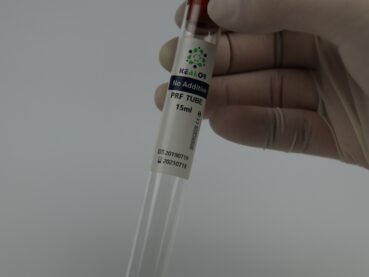Introduction to PRP Therapy
Hello there! Are you curious about PRP, especially when it comes to knee injections? Well, you’re in the right place. PRP, or Platelet-Rich Plasma therapy, is a fascinating medical breakthrough that’s been gaining attention, particularly in treating knee injuries. Let’s delve into this innovative treatment and understand how it’s revolutionizing knee recovery.
What is PRP?
PRP stands for Platelet-Rich Plasma. It’s a concentrated form of your own blood, packed with platelets and growth factors. These tiny warriors in your blood are key to healing and regenerating tissues – exactly what an injured knee needs!
The Science Behind PRP
So, how does PRP work? It’s all about harnessing the body’s natural healing powers. Platelets contain growth factors that promote cell regeneration and tissue repair. When concentrated and injected into an injured area, like the knee, they can potentially speed up the healing process.
PRP for Knee Injuries
Knee injuries can be a real pain, both literally and figuratively. PRP therapy offers a ray of hope for conditions like osteoarthritis, tendon injuries, and other knee-related woes.
Common Knee Injuries Treated with PRP
PRP isn’t a one-size-fits-all solution, but it’s particularly effective for certain knee injuries. This includes chronic tendon injuries, osteoarthritis, and ligament sprains. The idea is to kickstart the body’s own repair mechanisms in these areas.
How PRP Helps in Knee Healing
PRP’s magic lies in its ability to enhance the body’s natural healing processes. By injecting concentrated platelets into the knee, the therapy may reduce inflammation, stimulate tissue regeneration, and accelerate healing.
Preparing for PRP Treatment
If you’re considering PRP for your knee, there’s some groundwork to be done. It starts with a comprehensive consultation with your healthcare provider and may include specific instructions to prepare for the procedure.
The Initial Consultation
During your first visit, expect a thorough examination and a discussion about your medical history. This step is crucial to determine if PRP is the right choice for your knee issue.
Pre-Procedure Guidelines
Preparation is key. Your doctor might advise you to stop certain medications and follow specific guidelines to ensure the best outcome from the PRP treatment.
The PRP Injection Process
Now, let’s get to the heart of the matter – the PRP injection process. It’s a relatively straightforward procedure but involves several critical steps.
Blood Collection and Processing
The journey begins with drawing a small amount of your blood. This blood is then spun in a centrifuge to separate the platelet-rich plasma from other blood components.
The Injection Procedure
Once the PRP is prepared, it’s injected directly into the affected knee area. This process is usually guided by ultrasound imaging to ensure precise placement.
Aftercare and Recovery
After the injection, the recovery phase begins. It’s crucial to follow your doctor’s advice on aftercare to maximize the benefits of the PRP treatment.
Immediate Post-Injection Care
Immediately after the procedure, you might experience some discomfort. Rest and specific care instructions will be provided to aid in your recovery.
Long-Term Care and Follow-Up
Long-term care is essential for lasting results. This includes follow-up visits to monitor your progress and any additional care instructions.
Effectiveness and Research
The effectiveness of PRP for knee injections is backed by research, although results can vary. It’s important to have realistic expectations and understand that PRP is part of a comprehensive treatment plan.
Clinical Studies on PRP
Various clinical studies have shown promising results in using PRP for knee injuries, but research is ongoing. These studies are crucial for understanding the full potential of PRP therapy.
Patient Testimonials
Hearing from patients who have undergone PRP knee injections can be enlightening. Their experiences can provide valuable insights into what to expect from the treatment.
Risks and Considerations
As with any medical procedure, PRP injections come with their own set of risks and considerations. These can include infection, pain at the injection site, and no guarantee of success.
Potential Side Effects
Side effects of PRP injections are generally mild but can include pain, swelling, and bruising at the injection site. It’s essential to discuss these with your doctor beforehand.
Who Should Avoid PRP?
PRP is not suitable for everyone. Individuals with certain blood disorders, active infections, or certain medical conditions may need to avoid this therapy.
Conclusion
PRP therapy for knee injections is an exciting development in regenerative medicine, offering hope for many suffering from knee injuries. While it’s not a miracle cure, its potential to enhance the body’s natural healing process makes it a valuable option in the treatment arsenal.








